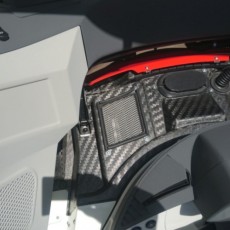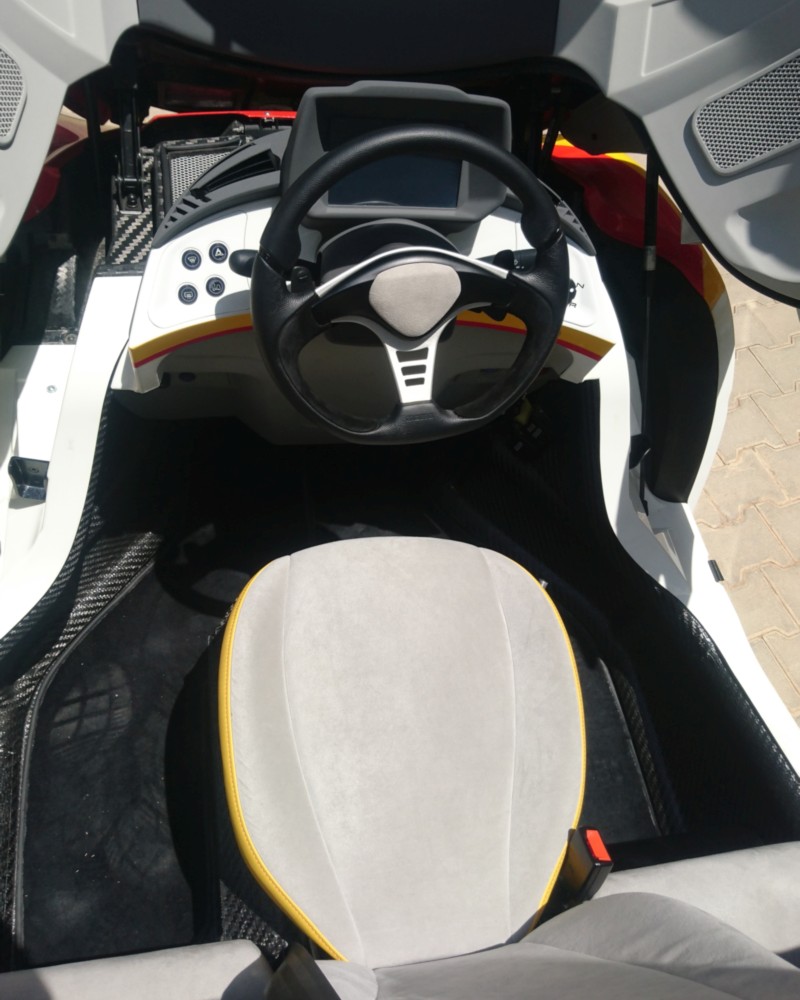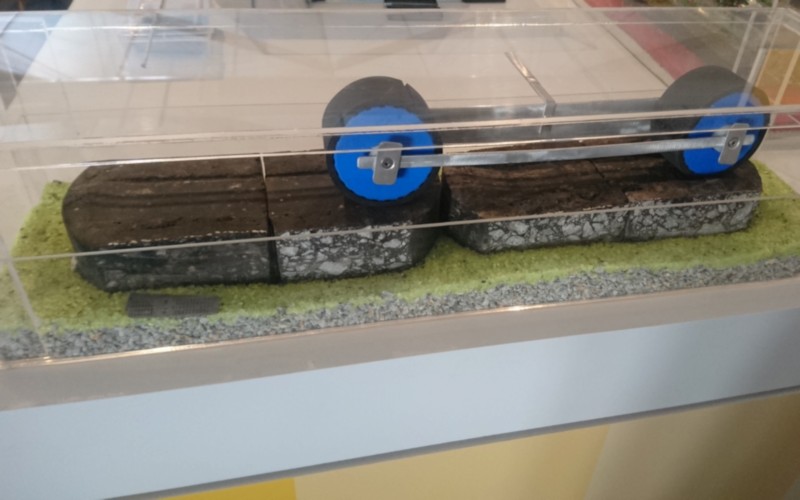The Shell Technology Centre in Bengaluru was host to one of the biggest events by the petroleum major. We were there first hand to see they change they want to bring.
Story: Jim Gorde
Photography: Jim Gorde & Shell
Shell are one of the most noted names in the world of fuel and lubrication and for good reason. They have been associated with one of the best-known and revered automotive brands, Ferrari, and been seen on one of the most iconic cars in motor sport: Michael Schumacher’s dominating Ferrari Formula 1 race car, that won five straight titles from 1999 to 2004. They have been making great strides in lubrication and the fact that their oil technology allows them to use blends and conjure lubricants from natural gas tells you all you need to convince you that they mean business.
After the introduction of Shell Helix Ultra with PurePlus technology – one that offered a lifetime warranty, no less – there was a matter of their Concept Car that was showcased in Beijing. Why a concept car from Shell? Well, the answer was simple. Integration is key. It cannot be three different direction making a turn and then meeting midway towards a common goal. That only works to some extent. To truly achieve complete integration, all those involved in the project must be involved from Day One. This is where the Concept Car comes in.
Shell Concept Car
Shell Technologies, Gordon Murray Design and Geo Technology began by envisioning a concept built in cooperation from the ground up. The lubricant was considered as a primary component as well. Shell’s specially-developed 0W-12 oil – the first lubricant created from natural gas – is as thin in viscosity as possible for its intended application. The platform is Gordon Murray Design’s patented iStream, conceived with a specific focus on weight reduction and aerodynamics; not too different from those used in F1. The construction in nothing less than spectacular, similar to that seen on the McLaren P1 and Alfa Romeo 4C.
 A carbon-fibre tub is the base. It holds steel elements, such as the seat belt reels, and the other formed parts of the chassis are bonded to it. The suspension is independent front and rear, a MacPherson strut set-up at the front with a sprung rear linked arm. The engine is essentially a 660-cc three-cylinder unit from a kei car and makes 45 PS and 64 Nm, although Geo Technology have optimised the engine by redesigning all internal components that are subject to friction. The pistons are also lighter and valve-train components are coated with DTC (diamond-like carbon) to minimise both resistance and wear. A sequential semi-automatic manual (popularly called AMT now) is used to drive the front wheels. The wheels themselves are covered and shod with low rolling resistance Michelin 145/70 R13 tyres.
A carbon-fibre tub is the base. It holds steel elements, such as the seat belt reels, and the other formed parts of the chassis are bonded to it. The suspension is independent front and rear, a MacPherson strut set-up at the front with a sprung rear linked arm. The engine is essentially a 660-cc three-cylinder unit from a kei car and makes 45 PS and 64 Nm, although Geo Technology have optimised the engine by redesigning all internal components that are subject to friction. The pistons are also lighter and valve-train components are coated with DTC (diamond-like carbon) to minimise both resistance and wear. A sequential semi-automatic manual (popularly called AMT now) is used to drive the front wheels. The wheels themselves are covered and shod with low rolling resistance Michelin 145/70 R13 tyres.
Although for a short spin, I did drive the car around the Shell Technology Centre. Access is granted in unconventional race- even drag-car fashion, the front lifts up and you get into the driver seat – positioned in the middle a la McLaren. Thank you, Gordon Murray – and that puts things in a very different perspective. Driven with a light foot, the 660-cc three-pot feels enough for the 550-kg car. Gear shifts are a bit slow and late, and the car will eventually get up to 145 km/h. The claimed 38 km/l, however, more than makes up for that!
The point Shell want to make is that there is hope for better efficiency and lower emissions if integration is given its due time and commitment. More aerodynamic, lightweight cars fuelled conservatively to go a longer distance. Of course, fossil fuel will eventually end, but making the most of it, for now, is key.
Technology Centre, Bengaluru
Shell have officially opened their new Technology Centre in Bengaluru. A major technology hub, it is spread over 52 acres, custom-built to house up to 1,500 experts, who would collaboratively work on worldwide innovative energy projects. The inauguration was conducted in the presence of Chief Guest Dharmendra Pradhan, Hon’ble Minister for Petroleum and Natural Gas, Govt of India, along with Alphonsus Stoelinga, Hon’ble Ambassador of Netherlands to India, R.V. Deshpande, Hon’ble Minister for Industries, Govt of Karnataka and Krishna Byre Gowda, Hon’ble Minister for Agriculture, Govt of Karnataka.
The Shell Technology Centre in Bengaluru is one of the three main technology hubs in Shell’s global network of R&D centres. The other two are located in the Netherlands and the USA. The new centre houses a variety of technical experts, laboratories and technology demonstration units, home to a wide spectrum of technical disciplines with specific expertise in fields such as liquefied natural gas, sub-surface modelling, data analysis, engineering design, bitumen, distillation, water technology and enhanced computational research. The centre is also helping pioneer efforts – using its IH2 (waste to fuel) technology – to turn forestry, agricultural and municipal waste into transportation fuels, with a new demonstration plant being built at the site.
Waste-to-Fuel
Fossil fuel comes from hundreds of years of compression of the natural environment and things that may have found their way onto it. The same principle can effectively be used, as a recreation of the phenomenon, to extract essential minerals using everything from hard waste as well as human-generated municipal waste, and turning it into usable fuel.
Shell have been conducting research and implementing this theory to put it into practical use, in a scaled-down manner, of course. The results were promising enough to go ahead and begin construction of a larger, more substantial demonstration version. The conversion ratio – and we spoke to Erik Bonino, Executive VP of Downstream Technology for Shell UK, about this – is significant, and if continued, there would be affordable fuel without the need for subsidies.
Shell are even testing their trash-generated fuel in real-world applications. The equivalent of petrol is being used in a BMW petrol-engine car, while the diesel is being tested in a Toyota Fortuner. So far, Bonino says, they are running normally. We look forward to more on this development.
Bitumen Power
Shell are the world’s largest marketer of bitumen, being in the business for over 90 years. From roads to runways, their daily supply is comparable to the amount required to resurface 450 km of road. Erik Bonino, Executive VP of Downstream Technology for Shell UK, is keen on one project in this department. Bitumen is a major component in road surfaces and, in that, it also holds a lot of potential. There are not one but three projects that are being actively researched. One is a synthetic bitumen emulsion that reduces nitrous oxides in the air by converting them into harmless nitrates that simply wash away from the road surface. The second is a phosphorescent ‘binder’ or glow-in-the-dark version that absorbs light during the day and gives it out after dark. The third is a conducive asphalt that absorbs heat and can convert that into usable energy. There is also an active asphalt which attracts certain particulates from the air to the road surface.









